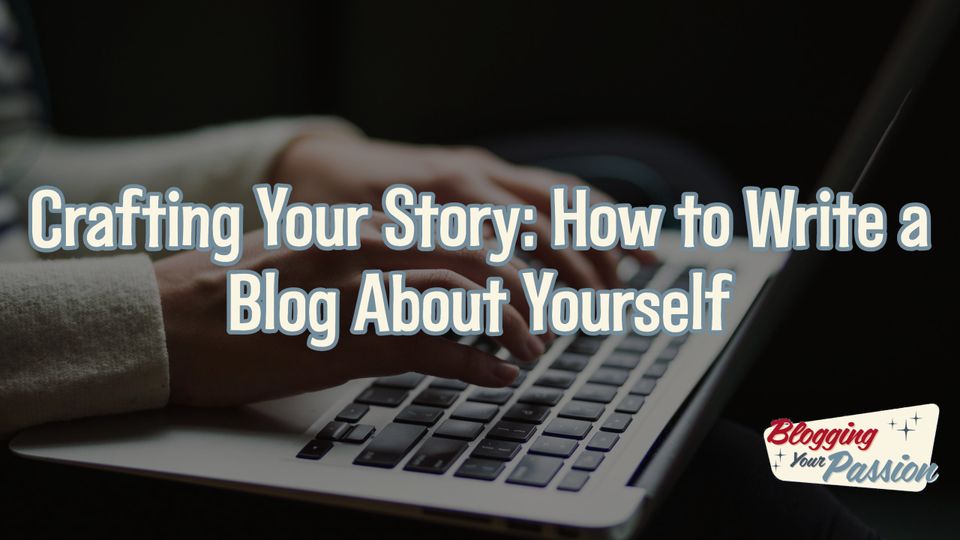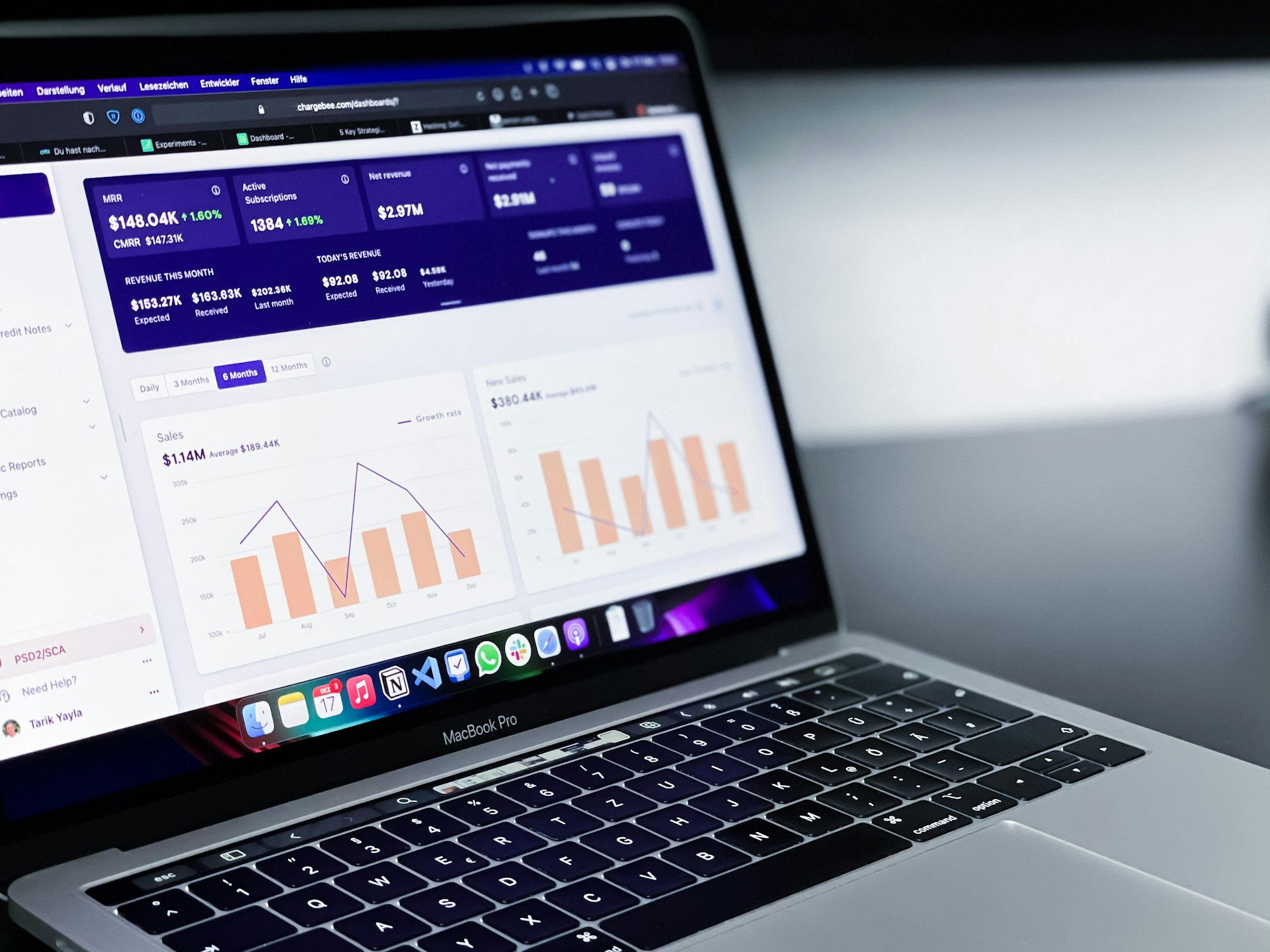Crafting Your Story: How to Write a Blog About Yourself

Alright, let's get to it.
Beneath the surface, personal blogging stands apart from other blogs due to its focus on sharing life experiences and creative ideas.
Unlike traditional business or news blogs that focus on reporting facts and figures, a personal blog is your stage for sharing life experiences and creative ideas with an audience scattered across the world wide web.
Use your blog to share unique perspectives like your personal weight loss transformation, how you earn money as a freelancer, or digital marketing tips you've learned as a business founder.
Bottom line: your readers want to get to know you.
Let's jump in and learn what to write in a blog about yourself.
Table of Contents (click to expand)
Why a Personal Blog is Different

Are you wondering how to make your posts stand out from the rest?
The answer lies in authenticity.
Unlike corporate blogs that often aim at promoting products or services - which isn't necessarily bad - personal bloggers thrive by connecting with their readers on a deeper level through genuine stories and shared interests.
Your mom blog post about parenting struggles can resonate more powerfully than any expert advice because they are real-life experiences people can relate to.
Similarly, list-based posts like "10 Things Only Parents Will Understand" offer relatable insights while demonstrating your unique perspective as well.
As far as what to say about yourself in a blog, you should always focus on what brings value to the reader. A blog is not really about you, but about the people you want to help with your blog.
For example, when sharing your life experiences, end the blog post talking about the lessons you learned that you want to pass along to your readers.
If you're trying to figure out what to say about yourself in a blog post, here's a list of my favorite blog about myself ideas:
- How-to Post: Write a blog post showing people how you do something.
- List Post: Share a list of tools or resources you use
- Story Post: Share a personal story and then add lessons learned at the end of your blog post.
- Reasons Why Post: Share a few reasons why you made a certain decision in your life, work, or business.
Bottom line: the secret to how to write a blog post about yourself is to focus the outcome of the post on the reader and how they will benefit.
Finding Your Voice Through Personal Blogging
The key here is finding YOUR voice - not just mimicking someone else's style but expressing yourself authentically so your personality shines through each post you craft.
It may take time (and patience) but once established; this distinctive tone becomes part of why readers keep coming back for more.
HubSpot suggests using anecdotes within content strategy as these narratives create lasting connections between the blogger & reader community.
Identifying Your Unique Angle in Blogging

The primary objective of a blog is to add fresh new content on popular topics. To do this, you need to answer the prospective questions of your ideal readers.
Your blog is your platform on the world wide web.
It's where you share insights, life experiences, and creative ideas with others who resonate with what you have to say.
But before we dive into how exactly that happens, there's something crucial we need to tackle first: identifying your unique angle in blogging.
This isn't just about finding a niche or choosing a topic for your mom blog post - it goes deeper than that.
We're talking about understanding what makes 'you good' at being yourself. This essence sets you apart from other bloggers and creates an engaging space for readers seeking fresh perspectives.
Using Life Experiences as Blog Content
Not only should these narratives be relatable, but they also need to offer value by incorporating lessons learned along the way.
For instance, if writing list-based posts sharing parenting tips during lockdown due to the COVID-19 pandemic, weave broader themes relevant to the audience, such as resilience, adaptability, self-care, etc.
Don't be concerned about a lack of material; I guarantee that each day brings a unique story to tell.
To keep track of potential topics, consider maintaining an idea journal and jotting down thoughts, observations, and memories whenever inspiration strikes.
Over time, this repository will serve as a rich source of material, reflecting the various facets of what makes 'you good' at being yourself.
Understanding Your Audience

You're good at writing.
You've got life experiences worth sharing and creative ideas flowing through your veins like a river.
But before you dive into the world wide web with your blog posts, there's one crucial step: understanding who will be reading them.
It's not simply a matter of recognizing the demographics or guessing what people could be intrigued by - it goes much deeper than that. It's all about creating content tailored specifically to their needs, interests, and questions.
Step 1. Answer Reader Questions
Ask yourself "What question am I addressing?" or "How does this piece solve my reader's problem?"
This approach ensures that every word resonates with readers while also providing value they can't resist coming back for more.
Step 2. Find Common Ground With Your Readers
Moving on to step two: finding common ground - shared moments fostering connection between blogger and reader alike.
Personal blogs are unique because they often draw from real-life experiences which when mirrored within own lives create deep resonance amongst audiences.
Whether discussing parenting challenges as part of mom blog, or exploring day-to-day occurrences these relatable aspects keep readers hooked.
Step 3. Tailor Content To Suit Audience Preferences
Last but not least is tailoring content according to preferences among identified persona groups.
For instance, if the majority prefer list-based posts over normal thought leadership ones then integrating formats accordingly would prove beneficial.
I know it sounds complicated but trust me once you start seeing results efforts put into understanding the target audience pay off tenfold. So why wait?
Choosing the Right Topics

You've got your blog set up and you're ready to start writing.
But before we dive into how exactly one writes a stellar blog post, it's important that we talk about what goes at the very heart of every successful article:
The topic itself.
Leveraging Social Media for Topic Ideas
Social media platforms like Facebook, or Instagram are treasure troves when it comes to finding new ideas for your next list-based blog post.
These sites are teeming with trending hashtags, popular posts, and viral challenges - all ripe sources of inspiration.
The key is in knowing where to look on these social networks treat content differently.
You might spot an interesting question posed by someone in one of your Facebook groups that could be spun into an informative piece answering common queries within your niche audience.
Moving over to Instagram - this platform often serves as a visual trendsetter.
An aesthetic trend catching fire here can easily translate into an engaging write-up discussing its origins or impact on current pop culture trends; remember though not just copy but add value through unique insights from life experiences too.
Beyond simply using social media platforms themselves, tools such as Google Trends can prove invaluable during good topic brainstorming sessions.
This free tool shows which search terms people around the world wide web currently find most relevant - giving insight directly from potential readers' minds.
Crafting Engaging Blog Posts

Before delving into the specifics of crafting compelling blog posts, let's be clear on why effective writing is so important.
Prior to diving into the nuts and bolts of creating engaging blog posts that resonate with your audience, it is crucial we understand why good writing skills are essential.
Creating words in an artful manner so they can reach out to the readers' souls is a must.
Why Review-Based Writing Doesn't Work
You might be wondering: Why doesn't review-based writing work?
Well, here's the thing:
While reviews can provide valuable insights for consumers looking for information about products or services, relying solely on them may not yield desired results when trying to engage deeply with readers through personal blogs.
This type of content lacks an emotional touch which is key when building relationships via blogging.
The solution?
Incorporate more personal narratives into your posts.
By balancing between sharing experiences and providing informative content (like product reviews), you create an interesting mix that encourages reader interaction while still delivering value.
People connect better with stories; use yours as leverage.
Honing Your Writing Skills
Here are some general best practices for writing blog posts:
- Create compelling headlines: They're often what potential readers see first. If you don't get them to click on the headline, they won't see the hard work you put into your blog post.
- Craft a good introduction: Let's look at how to start a blog about yourself. When crafting a blog about yourself, treat your first paragraph as a sample, providing an intriguing snapshot of your unique story that a stranger would find engaging. As you write, be mindful that not only strangers but also potential employers may read your blog, so imitate the balance of professional and personal tones typically seen in successful personal blogs.
- Have interesting subheadlines: Offer structured guidance tailored specifically towards bloggers' needs.
- Make your text scannable: Avoid big paragraphs. We read differently online than we do in a book. We tend to scan when reading online. Short paragraphs, bullet points, and lists make it easier for people to read.
There it is folks.
The secret sauce behind crafting captivating blog posts lies in mastering effective headline creation techniques, striking a balance between different forms of content (reviews vs narrative), and honing clarity and conciseness in your blog posts.
Promoting Your Personal Blog
Alright, so you've written a killer blog post. What's next?
It's time to let the world know about it. To do this effectively, we need a solid blog post promotion strategy in place that uses social media handles, email newsletters, and collaborations with other bloggers.
Building an Online Presence Through Social Media Platforms
Social media platforms are key players when it comes to establishing your online presence for personal blogs. Each platform has its own unique features which can be used strategically to boost visibility and attract more readership.
Facebook, for instance, is great at fostering community engagement through dedicated pages where you can share posts and interact directly with your audience.
On Twitter (without getting too specific), timely updates or sneak peeks of upcoming content work wonders in capturing attention.
Moving over to Instagram - visuals reign supreme here.
Quality images from your posts paired with engaging captions could pull potential readers right into your corner of the web.
Beyond these usual suspects like Facebook, Twitter, and Instagram, consider exploring LinkedIn if professional topics dominate your content or Pinterest if lifestyle themes such as food recipes or DIY projects form part of what you're good at blogging.
Just remember consistency across all channels - each handle should echo the name of our blog, enabling followers to find us effortlessly across different networks.
Email newsletters also keep subscribers informed about new entries while directing traffic back toward our site.
Collaborations within similar niches open up opportunities for guest posting, leading to increased exposure and credibility among peers and audiences alike.
Last but certainly not least, SEO optimization ensures search engines understand what our content speaks, increasing chances of ranking higher in relevant searches and attracting organic traffic in the long run.
SEO encompasses several aspects including keyword research, meta descriptions, image alt tags, etc.
It might seem daunting at first, but resources like Moz Beginner Guide To SEO simplify the journey considerably.
Measuring the Success of Your Personal Blog

Gauging the resonance of your blog posts goes beyond merely counting likes or shares; you need to examine reader engagement with your content.
You need detailed insights into reader behavior and engagement with your content. And guess what? There are tools for that.
I'm talking about platforms like Google Analytics or HubSpot's free blog maker. These provide comprehensive analytics on each post including page views, bounce rate, average time spent, etc.
The Importance of Page Views and Bounce Rate
You might ask: "What do these metrics mean?" Let me explain:
Average Time Spent: An Indicator Of Engagement
Moving forward. The 'Average Time Spent' metric is also crucial as it indicates how long users stay engaged with specific posts - if they're spending longer periods reading certain pieces then bingo.
That means those articles were interesting & informative, so keep producing similar ones.
Remember though, don't rely solely on review-based writing; it doesn't work all the time.
The balance between narratives and reviews is key here.
Making Use Of Reader Behavior Data For Future Strategies
Last but not least, understanding these metrics allows bloggers to refine their strategies based on what works best for their audience worldwide.
If a list-based post generates higher engagement rates compared to normal thought leadership blogs, incorporating lists into the future would be beneficial.
But remember, this isn't just a game of numbers.
Always pay attention to feedback from the comments section too.
It will help improve the quality, relevance, and overall appeal over time.
FAQs About How to Write a Blog About Yourself
How do I write about myself in a blog?
To write about yourself, start by identifying your unique angle. Use life experiences as content and craft engaging posts that resonate with your audience.
How do you write a good personal blog?
A good personal blog requires understanding your audience, choosing relevant topics, crafting engaging posts, promoting the blog effectively, and measuring its success over time.
Can I start a blog about myself?
Absolutely. Starting a blog is an excellent way to share your story and connect with others who share similar interests or perspectives.
What is the purpose of a blog?
The purpose of a blog is to write and share your thoughts, ideas, experiences, or expertise on a specific topic. It allows you to connect with your readers and create a following.
How do I write a blog post about myself?
To write a blog post about yourself, you can introduce yourself to your readers, talk about your accomplishments, share personal stories or experiences, and inspire others with your journey. Remember to keep your blog focused and organized.
Can I use my blog to make money?
Yes, you can make money from your blog. There are several ways to monetize your blog, such as through advertisements, sponsored posts, affiliate marketing, selling products or services, or even offering consulting or coaching services.
How do I define the purpose of my blog?
To define the purpose of your blog, think about what you want to accomplish with it. Do you want to educate, inspire, entertain, or inform your readers? Understanding your blog's purpose will help you create content that resonates with your target audience.
How do I publish my blog?
To publish your blog, you need to have a blogging platform or website. You can choose platforms like WordPress, Blogger, or Medium. Create an account, customize your blog, write your blog posts, and then publish them for your audience to see.
How do I come up with a catchy blog post title?
To come up with a catchy blog post title, think about the main idea of your blog post and create a title that grabs readers' attention. Use keywords, make it concise and engaging, and consider using numbers or intriguing statements to make it more appealing.
How do I get started with my blog?
To get started with your blog, you need to choose a blogging platform, create an account, customize your blog's design, write your first blog post, and start promoting it to attract readers. Consistency is key, so make sure to regularly publish new content.
Can I write a blog as a diary?
Yes, you can write a blog as a personal diary. Many people find it therapeutic to document their thoughts, feelings, and experiences in a blog format. It can also serve as a way to connect with like-minded individuals who may relate to your personal journey.
Do I need to make my blog public?
Whether or not you make your blog public is entirely up to you. If you want to connect with a wider audience and gain followers, it's recommended to make your blog public. However, if you prefer to keep your blog private or share it with a selected group of people, you can do that too.
How do I make my blog stand out?
To make your blog stand out, you need to focus on providing valuable content, unique perspectives, and engaging writing. Find your niche and establish yourself as an expert in that area. Interact with your readers through comments and social media, and continuously improve your writing skills.
Conclusion
Writing a blog about yourself is an art that requires creativity, authenticity, and strategy.
You've learned the importance of identifying your unique angle in blogging and using life experiences as compelling content.
A deep understanding of your audience guides you to craft engaging posts that resonate with them.
Choosing the right topics involves brainstorming based on personal interests, social media trends, and reader feedback.
Crafting engaging blog posts demands strong writing skills - from catchy headlines to clear language.
Promoting your personal blog is key for visibility; leverage social media platforms, email newsletters, SEO techniques, and collaborations.
Finally, measuring success through tools like Google Analytics helps refine future strategies based on what works best with readers.
